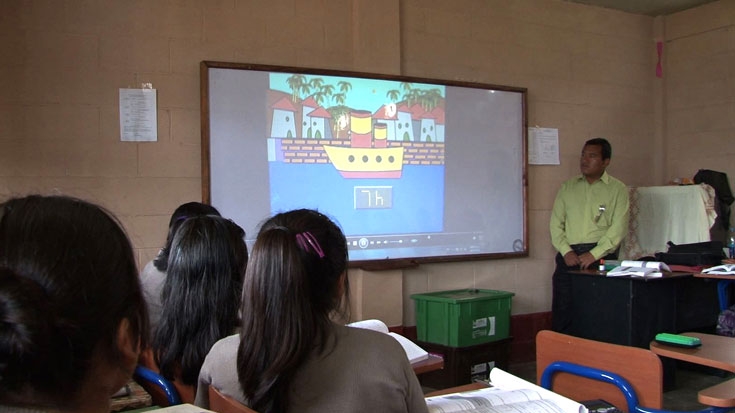We live in an age of screens. From smartphones to computers to televisions, we spend hours a day glued to them. And this is particularly true for teenagers.
But can this technology become an ally in their education? Contrary to what parenting magazines or popular theory may say, the answer is surprisingly yes.
From Mexico to Colombia, a growing number of Latin American students watch an hour and a half of educational programs in the classroom daily.
This practice is not a waste of time or an excuse for teachers to avoid their classroom responsibilities. It is a methodology known as Telesecundaria in which all school subjects are taught in modules that include watching television, reading, doing exercises and taking tests.
Increasingly popular
Telesecundaria schools have become popular in several Latin American countries. One is Guatemala, where more than 105,000 young people attend schools that use this system.
“Before Telesecundaria, young people completed primary school and then went to work in the field. The girls stayed home with their mothers to prepare tortillas and help with the housework,” says José Hernández of the Telesecundaria Unit in the Ministry of Education of Guatemala. “Telesecundaria fills the void left by the lack of secondary schools in remote areas,” he says.
The image on the screen is not only a powerful tool of this method; it also functions as a hook to reel in community members to the schools.
“Initially, several parents came out of curiosity. It was rumored that we had a television in the school and that we used it to teach classes,” says Juan Francisco Coconcoy, director of the Telesecundaria Institute at Xenimajuyú, near Tecpán, the ancient Maya capital.
Now, however, it is not just televisions that attract attention –most telesecondary schools do not even use TVs or DVDs, but rather projectors, computers and hard drives – but also the fact that the students have their own textbooks.
“When you live in the countryside, having a book that you can call your own is a treasure,” says Hernández, who adds that during class, Guatemalan children not only watch television, but also “read for at least half an hour every day.”
But Telesecundaria was not born and raised in Guatemala; rather, it was developed in Mexico in 1968. Currently, 20% of schoolchildren attend a Telesecundaria school in the country. Recently, however, it has extended throughout the isthmus– in Honduras and Panama it is known as Telebásica – and has even reached South America.

